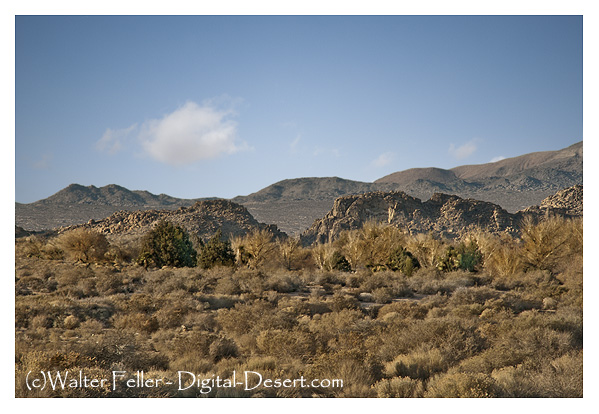Geology of the Mojave River
Draft
Introduction:

Upper Narrows
The Mojave flows 110 miles from the San Bernardino Mountains headwaters to its terminus at Soda Lake. The river flows below the surface for much of its length and only intermittently at the surface.
The Mojave River, an arid desert lifeline, supplies water and precious resources. It holds an impressive geological history.
Formation and Evolution:
The Mojave River has a complex geological history that dates back millions of years. It began to take shape approximately 23 million years ago during the Miocene epoch as tectonic forces uplifted the region. Over time, the river carved its path through the Mojave Desert. It was influenced by the uplifting and subsiding of the land, as well as water's erosive power.Geomorphology:
The Mojave River meanders through diverse landscapes, showcasing the region's rich tapestry of geological features. As it flows, the river cuts through ancient alluvial fans, revealing layers of sediment that hold clues to the past.These alluvial fans result from sediment deposition from nearby mountains and serve as a testament to the dynamic nature of the Mojave River.
Geological Features:

The Mojave River Basin is home to various geological features that have shaped the region's unique landscape. One of these features is the Granite Mountains, composed of granitic rocks that were once deeply buried and subsequently uplifted. These mountains offer a glimpse into the tectonic forces that have shaped the Mojave River.
Hydrogeology:

The Mojave River is a surface water system and a significant groundwater resource. The river is fed by surface runoff and groundwater discharge, making it a crucial water source in the desert. The aquifers underlying the Mojave River Basin sustain the river's flow, providing a lifeline for the region's human and natural ecosystems.
Fossils and Paleontology:
The Mojave River Basin is a treasure trove for paleontologists, offering a glimpse into the ancient ecosystems that once thrived in the area. Fossil remains of extinct mammals, such as mammoths and saber-toothed cats, have been discovered along the river's banks, providing valuable insights into the region's prehistoric past.Conclusion:

The geology of the Mojave River is a captivating story of tectonic forces, erosion, and the interplay of water and land. From its formation millions of years ago to its present-day role as a vital water source, the Mojave River continues to shape the landscape and support diverse ecosystems. Exploring the geology of the Mojave River offers a glimpse into the Earth's complex history and reminds us of nature's immense power and beauty.
Maps
Points of Interest
Nature
History
Geology
click for larger map
East Fork (Deep Creek)
West Fork
Ancestral Mojave River
How the Mojave River got its Name
Mojave River Trail
The Broken River

